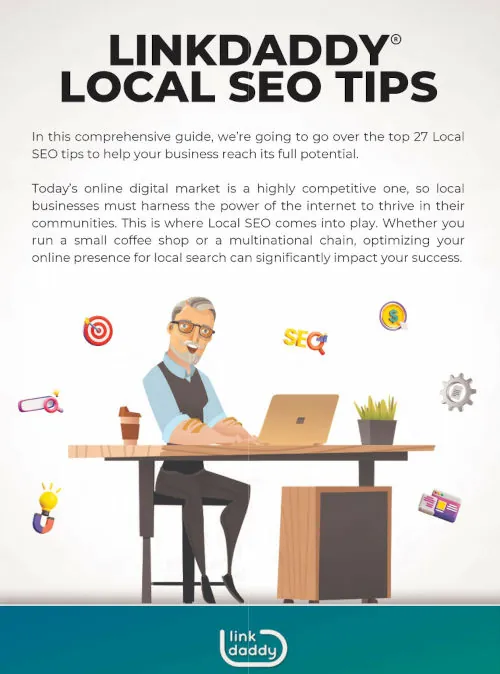
Welcome to Topic Creation 101, where we will explore the art of creating content that caters to your target customer’s interests and needs. As a content creator, it is crucial to understand that your audience should be the focal point of your content strategy. After all, they are the ones who will read, engage with, and share your content.
Choosing a topic that resonates with your target audience is the first step in creating content that will make an impact. But how do you know what your audience cares about? The answer lies in understanding their pain points, interests, and preferences.
In this blog post, we will uncover the secrets of choosing a topic that your target customer cares about. We will dive deep into the various methods that will help you understand your audience and identify their needs. From conducting surveys and polls to analyzing social media engagement, we will explore the different ways that you can gain valuable insights into your audience’s preferences.
We will also discuss how to create content that addresses your audience’s pain points and provides solutions to their problems. By doing so, you will position yourself as an authority in your niche and build trust with your target customers.
So, whether you are a seasoned content creator or just starting, this post will provide you with the tools and knowledge you need to create content that speaks directly to your target customer. It’s time to put your audience first and create content that truly resonates with them!
Topic creation Step 1: Understand Your Target Customer

Understanding your target customer is one of the most important things you can do to ensure the success of your content. Not only does it help you choose the right topics, but it also helps you tailor your content to meet the needs and expectations of your audience.
When you understand your target customer, you can create content that speaks directly to them. You can use their language, address their pain points, and offer solutions to their problems. This makes your content more relatable and engaging, which can increase the chances of your audience returning to your site or engaging with your brand.
Moreover, understanding your target customer can help you create content that resonates with them on a personal level. By understanding their values, interests, and preferences, you can create content that aligns with their beliefs and speaks to their passions. This can help you build a loyal following and create a community of like-minded individuals who share a common interest.
Another benefit of understanding your target customer is that it can help you create content that is more valuable and useful. When you know what your audience is looking for, you can create content that provides them with the information they need or the solutions they seek. This can help establish your brand as a trusted authority in your niche and increase the likelihood of your content being shared and recommended.
Understanding your target customer is essential when choosing a content topic. It helps you create content that is more relatable, engaging, and valuable, which can lead to increased engagement, loyalty, and brand awareness. By taking the time to understand your audience, you can create content that truly speaks to them and helps you stand out in a crowded digital landscape.
How to gather information about your target customer
Understanding your target customer is critical to the success of your business. It’s essential to know who they are, what they like, and what motivates them to make a purchase. Gathering information about your target customer can seem overwhelming, but it doesn’t have to be. Here are some simple steps to help you get started.
1. Define your target customer: The first step is to identify who your target customer is. This could be based on demographics such as age, gender, or location, or it could be based on psychographics such as interests or values. Once you’ve defined your target customer, it’s much easier to gather information about them.
2. Use social media: Social media provides a wealth of information about your target customer. Look at their profiles to see what they’re posting about, and what they’re interested in. You can also use social media analytics tools to get more in-depth insights into their behavior.
3. Conduct surveys: Surveys are a great way to gather information about your target customer. You can create a survey using tools like SurveyMonkey or Google Forms, and then distribute it to your target customer via email, social media, or your website.
4. Analyze your website traffic: Your website traffic can tell you a lot about your target customer. Analyze your website data to see where your traffic is coming from, what pages they’re visiting, and how long they’re staying on your site.
5. Talk to your customers: One of the best ways to gather information about your target customer is to talk to them directly. Reach out to your customers via email or social media and ask them for feedback. You can also conduct focus groups or one-on-one interviews to get more in-depth insights.
Gathering information about your target customer is critical to the success of your business. By following these simple steps, you can gain valuable insights into your target customer and use that information to improve your products, services, and marketing efforts.
Customer Persona Example
Name: Sarah
Age: 32
Occupation: Marketing Manager
Location: Urban area
Education: Bachelor’s degree
Income: $80,000
Marital Status: Single
Interests: Fitness, traveling, trying new restaurants, attending music festivals
Technology: Uses a smartphone and laptop for work and personal use; active on social media platforms
Goals: Increase fitness level, advance in career, save for a down payment on a house
Challenges: Limited time for personal activities, balancing work and social life; finding affordable housing in a desirable location, staying motivated to achieve fitness goals.
Topic creation Step 2: Brainstorm Topics

Brainstorming topic ideas is an exciting and creative process that can lead to some amazing results. Whether you are a writer, blogger, or content creator, coming up with unique and engaging topics can be a challenging task. However, with the right approach and mindset, you can unlock your creativity and generate an endless stream of ideas.
To get started with brainstorming topic ideas, it’s important to create a relaxed and open environment. Find a quiet corner or a comfortable space where you can focus and let your thoughts flow freely. You can also try some relaxation techniques like deep breathing or meditation to clear your mind and create a positive mindset.
Next, start by jotting down any ideas that come to mind. Don’t worry about the quality or relevance of the ideas at this stage. Just let your imagination run wild and write down anything that comes to mind. You can use tools like mind maps or brainstorming software to organize your ideas and make connections between them.
Another great way to generate topic ideas is to use prompts or inspiration from various sources. You can read books, watch movies, or browse the internet for inspiration. Additionally, you can use social media platforms like Twitter and Instagram to see what’s trending and what people are talking about.
Lastly, don’t be afraid to collaborate with others. Brainstorming with a group of people can lead to more diverse and unique ideas. You can also use online forums or social media groups to collaborate with people from different backgrounds and areas of expertise.
Brainstorming topic ideas is a fun and rewarding process that requires a creative mindset and a willingness to explore new ideas. By following these tips and techniques, you can unlock your creativity and generate an endless stream of unique and engaging topics.
Using customer feedback to generate ideas
In today’s world, the customer is king. Their feedback is the most valuable asset for any business, as it helps to improve the product or service offered. Smart companies know that customer feedback is a goldmine of ideas that can help them stay ahead of the competition. By effectively using customer feedback, businesses can generate new ideas and insights that can lead to increased customer satisfaction and loyalty.
There are different ways to gather customer feedback, including surveys, feedback forms, social media, and customer service interactions. Once this feedback is collected, businesses can use it to identify areas that need improvement and make changes accordingly. This process not only helps to improve the product or service offered but also shows customers that their opinions are valued.
One of the best things about using customer feedback to generate ideas is that it allows businesses to stay ahead of the curve. By listening to their customers’ needs and desires, companies can innovate and create new products or services that are tailored to their customers’ preferences. This not only helps to retain existing customers but also attracts new ones.
Effective use of customer feedback can also lead to cost savings. By identifying the areas that need improvement, businesses can reduce waste, streamline processes, and cut down on unnecessary expenses. This, in turn, can lead to increased profits and a healthier bottom line.
Using customer feedback to generate ideas is a win-win situation for both businesses and their customers. It allows businesses to stay competitive, improve their products or services, and attract and retain customers. Customers, on the other hand, benefit from better products or services that meet their needs and desires. So, if you’re a business owner or manager, start listening to your customers today and reap the rewards of their valuable feedback.
Tools and resources to help generate ideas
1. Google Trends: This tool allows you to see what topics are trending in your industry or niche and can help you identify opportunities for timely and relevant content.
2. BuzzSumo: This platform helps you identify the most shared content on social media and other platforms, giving you insights into what topics are resonating with your target audience.
3. Quora: This Q&A platform can be a great source of inspiration for content topics, as it allows you to see what questions people are asking in your industry or niche.
4. Reddit: This online community can be a great source of ideas for content topics, as it allows you to see what topics are popular and being discussed in your niche.
5. Industry events and conferences: Attending industry events and conferences can be a great way to stay up-to-date on the latest trends and topics in your industry, and can help you generate ideas for content.
6. Customer feedback: Listening to your customers and paying attention to their feedback can help you identify topics that are important to them and relevant to your business.
7. Competitor analysis: Looking at what your competitors are doing and what topics they are covering can help you identify gaps in the market and opportunities for creating unique content.
8. Keyword research: Conducting keyword research can help you identify the topics that people are searching for in your industry, and can help you create content that is optimized for search engines.
9. Social media listening: Monitoring social media channels can help you identify the conversations and topics that are important to your audience, and can help you generate content ideas that are relevant and engaging.
10. Brainstorming sessions: Collaborating with your team or other industry experts in a brainstorming session can help you generate a wide range of ideas for content topics, and can help you identify new and innovative approaches to creating content.
topic creation Step 3: Evaluate Your Topic Ideas

When it comes to choosing a topic, it’s important to evaluate its potential success before diving in. This can save you time, money, and energy in the long run. Here are some key factors to consider:
First, consider your audience. Who are you trying to reach with this topic? Will it resonate with them? Is it something they’re interested in or need to know? Conducting market research, surveys, and focus groups can help you gauge interest and demand.
Next, look at the competition. Is this topic oversaturated or already well-covered? If so, it may be difficult to stand out and gain traction. On the other hand, if there’s a gap in the market or a new angle to explore, you may have a better chance of success.
Consider the format and delivery method as well. Will this topic work best as a blog post, video, podcast, or something else? Where does your audience consume content most often? By tailoring your content to their preferences, you increase the likelihood of success.
Another important factor is your own expertise and passion for the topic. If you’re not knowledgeable or interested in the subject matter, it will be evident in your content and may not resonate with your audience. Choose a topic that aligns with your skills and interests, and you’ll be more likely to create high-quality, engaging content.
Finally, set measurable goals and track your progress. This will help you determine if your topic is achieving the desired results and if adjustments need to be made.
By considering these factors and evaluating the potential success of your topic, you’ll be better equipped to create content that resonates with your audience and achieves your goals.
Metrics to consider when evaluating topics
1. Relevance: How closely does the topic relate to your audience’s interests or needs?
2. Timeliness: Is the topic current and relevant to current events or trends?
3. Complexity: Is the topic complex enough to generate discussion and interest among your audience?
4. Controversy: Does the topic have controversial or opposing perspectives that could generate debate and engagement?
5. Novelty: Is the topic new or unique in some way that could pique your audience’s interest?
6. Accessibility: Is the topic understandable and accessible to your audience, or does it require specialized knowledge or jargon?
7. Potential impact: Does the topic have the potential to make a significant impact on your audience’s lives or the broader world?
8. Format suitability: Is the topic suitable for the format in which you plan to present it, such as a blog post, podcast episode, or video?
9. Search volume: What is the search volume for related keywords, and how much traffic could your content potentially generate?
10. Social media engagement: What is the level of engagement and interest in related topics on social media platforms, and how could you leverage this engagement to increase visibility for your content?
Example: Evaluating the topic idea “The Benefits of Meditation for Mental Health”
1. Relevance: Meditation is a topic of interest to many people who are looking for ways to improve their mental health and wellbeing.
2. Timeliness: The topic is current and relevant to the growing interest in mindfulness and self-care practices.
3. Complexity: Meditation is a complex topic that involves different techniques and approaches, which could generate discussion and interest among the audience.
4. Controversy: While meditation is generally seen as a positive practice, there may be some controversial perspectives on its efficacy or suitability for certain individuals.
5. Novelty: While meditation is not a new topic, there may be new research or techniques that could make the topic feel fresh or unique.
6. Accessibility: Meditation can be accessible to a wide range of people, although some may require guidance or instruction to get started.
7. Potential impact: Meditation has the potential to make a significant impact on mental health and wellbeing, which could be compelling for the audience.
8. Format suitability: The topic could work well for a blog post, podcast episode, or video, as it can be discussed in detail and demonstrated through guided meditation exercises.
9. Search volume: According to Google Trends, the search volume for “meditation for mental health” has been steadily increasing over the past few years, indicating a potentially high level of interest in the topic.
10. Social media engagement: There is a significant amount of engagement and interest in meditation and mindfulness on social media platforms, which could be leveraged to increase visibility for the content.
Step 4: Choose Your Topic

Factors to consider when choosing a topic
1. Interest: Choose a topic that you are interested in or passionate about. This will make researching and writing on the topic more enjoyable.
2. Relevance: Choose a topic that is relevant to your field of study or the course you are taking.
3. Originality: Choose a topic that is unique or original. Avoid choosing a topic that has already been extensively researched or discussed.
4. Feasibility: Choose a topic that is feasible and can be researched within the given time frame and resources.
5. Significance: Choose a topic that is significant and has a meaningful impact on society or the field of study.
6. Accessibility: Choose a topic that is easily accessible and has enough information available for research.
7. Complexity: Choose a topic that is challenging and requires critical thinking and analysis. Avoid choosing a topic that is too broad or too narrow.
8. Audience: Consider the audience for your research paper or presentation. Choose a topic that is appropriate for your intended audience.
Example of choosing a topic
Let’s assume you are a student studying environmental sciences and you need to choose a topic for your research paper. Here’s an example of how you could apply the above criteria:
1. Interest: You are interested in climate change and its effects on biodiversity.
2. Relevance: The topic is highly relevant to your field of study and course.
3. Originality: You decide to focus on the impact of climate change on a specific species of bird that is endemic to a particular region. This is a unique and original topic.
4. Feasibility: You have access to relevant databases, peer-reviewed journals, and other resources to conduct research within the given time frame.
5. Significance: The topic is significant as it highlights the impact of climate change on biodiversity, which is a crucial issue that affects the entire planet.
6. Accessibility: The topic is accessible as there is ample research available on climate change and its impact on biodiversity.
7. Complexity: The topic is challenging as it requires extensive research and analysis to understand the impact of climate change on a specific species of bird.
8. Audience: The topic is appropriate for your audience, which includes your professor, peers, and other students interested in environmental sciences.
Based on the above criteria, you could choose a topic such as “The Impact of Climate Change on the Endemic Bird Species of the Galapagos Islands.” This topic allows you to delve deeper into the effects of climate change on a specific species of birds and their habitat, while also highlighting the importance of biodiversity conservation.
Summary

Creating content that resonates with your target audience is key to building a loyal and engaged following. By understanding your audience’s pain points, interests, and preferences, you can create content that speaks directly to them and provides value. Brainstorming topic ideas, evaluating their potential success, and choosing a topic that aligns with your expertise and passion are all important steps in the content creation process.
Additionally, gathering customer feedback, using tools and resources to generate ideas, and considering metrics such as relevance, timeliness, and accessibility can help you create content that stands out and makes an impact. Remember, putting your audience first and creating content that truly resonates with them is the key to success in today’s digital landscape. So, let’s get creative and start creating content that our target customers care about!









